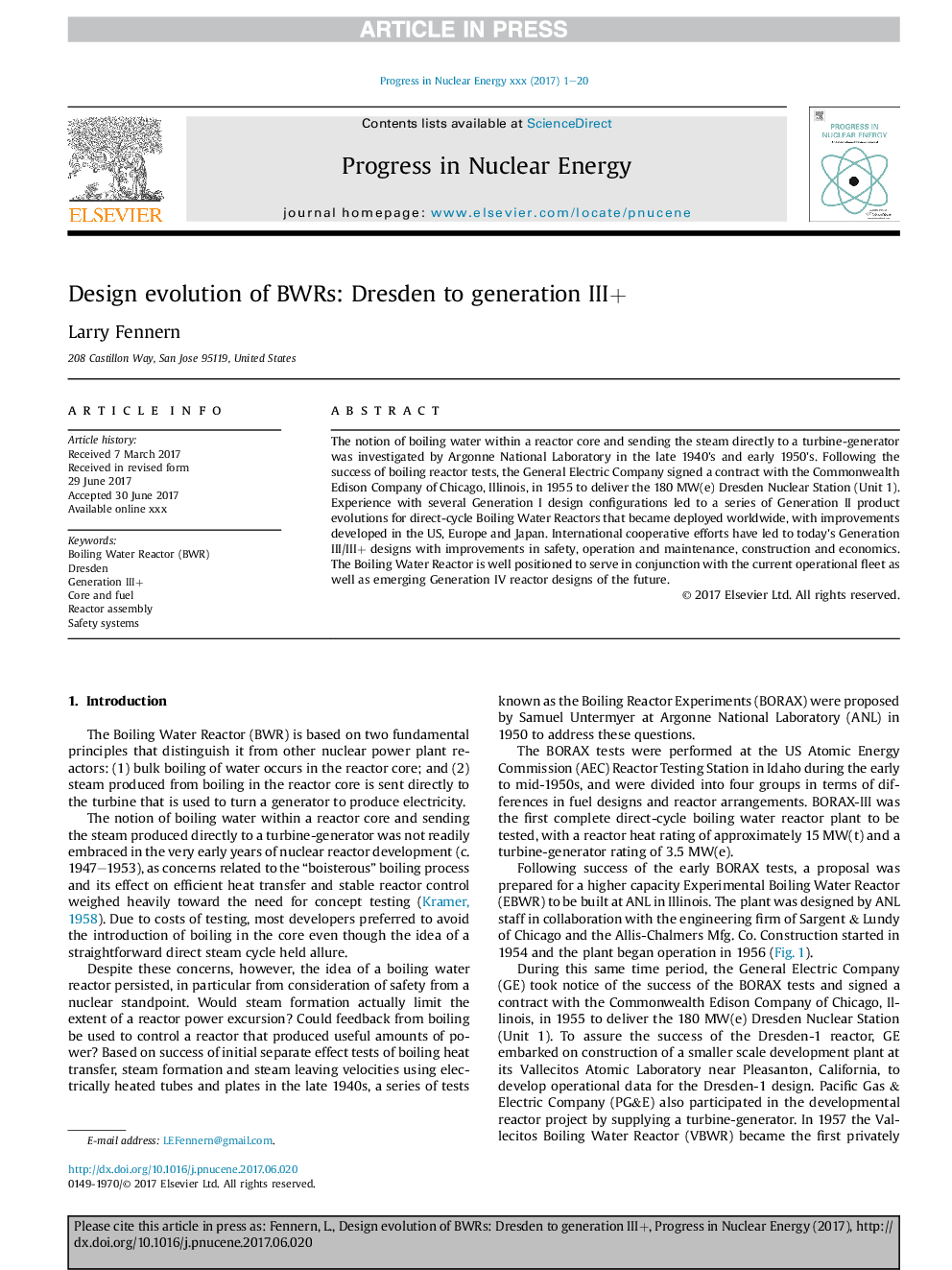| Article ID | Journal | Published Year | Pages | File Type |
|---|---|---|---|---|
| 8084549 | Progress in Nuclear Energy | 2018 | 20 Pages |
Abstract
The notion of boiling water within a reactor core and sending the steam directly to a turbine-generator was investigated by Argonne National Laboratory in the late 1940's and early 1950's. Following the success of boiling reactor tests, the General Electric Company signed a contract with the Commonwealth Edison Company of Chicago, Illinois, in 1955 to deliver the 180Â MW(e) Dresden Nuclear Station (Unit 1). Experience with several Generation I design configurations led to a series of Generation II product evolutions for direct-cycle Boiling Water Reactors that became deployed worldwide, with improvements developed in the US, Europe and Japan. International cooperative efforts have led to today's Generation III/III+ designs with improvements in safety, operation and maintenance, construction and economics. The Boiling Water Reactor is well positioned to serve in conjunction with the current operational fleet as well as emerging Generation IV reactor designs of the future.
Related Topics
Physical Sciences and Engineering
Energy
Energy Engineering and Power Technology
Authors
Larry Fennern,
